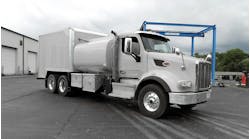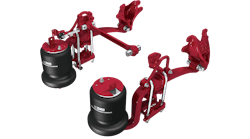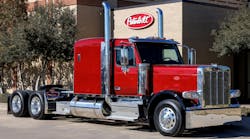Navistar International Corporation announced August 2 that it would add selective catalytic reduction-based controls to its previously announced next-generation ICT+ (In-Cylinder Technology Plus) heavy-duty diesel engines. The shift in emission control technology is one of a series of steps Navistar is taking to rescue its market position. Steps include:
*Adopting a US market proven aftertreatment solution to accelerate delivery of ICT+, Navistar's next generation clean engine solution;
*A market transition plan for Class 8 engine sales; and
*Securing a $1.0 billion loan commitment, which should enhance Navistar's liquidity.
"The actions announced today establish a clear path forward for Navistar and position the company to deliver a differentiated product to our customers and provide a platform for generating profitable growth," said Daniel C Ustian, Navistar chairman, president, and chief executive officer.
As previously announced, the introduction of ICT+ leverages the advances Navistar has made in clean engine technology, while also providing greater certainty for its customers, dealers, and other key constituents. To accelerate delivery of ICT+, Navistar has entered into a non-binding memorandum of understanding, under which Cummins Emission Solutions would supply its proven urea-based aftertreatment system to Navistar. This would be combined with Navistar's advanced in-cylinder engine to create ICT+.
Navistar expects that by combining Cummins' aftertreatment system with its existing MaxxForce engines, its ICT+ will meet 2010 US Environmental Protection Agency (EPA) emissions regulations and position the company to meet greenhouse gas (GHG) rules in advance of 2014 and 2017 requirements. During the transition to ICT+, Navistar will continue to build and ship current model EPA-compliant trucks in all vehicle classes using appropriate combinations of earned emissions credits and/or non-conformance penalties (NCPs). The company continues to have discussions with the EPA and the California Air Resources Board (CARB) regarding its transition to ICT+.
As part of the expanded relationship with Cummins Inc, Navistar plans to offer the Cummins ISX15 engine in certain models, expanding the company's vehicle lineup and on-highway market opportunity. Navistar plans to introduce the Cummins ISX15 engine as a part of its North American on-highway truck line-up beginning in January 2013 and to begin the introduction of ICT+ in its MaxxForce 13-liter in early 2013.
Navistar anticipates that its manufacturing cash will be between $575 million and $625 million at the end of the third quarter. Additionally, to support these actions and to improve its financial flexibility, Navistar has entered into a firm commitment letter with a group of banks led by JPMorgan Chase Bank NA and Goldman Sachs Lending Partners LLC and including Merrill Lynch, Pierce, Fenner & Smith Incorporated and Credit Suisse pursuant to which the banks have committed to provide an up to five year $1.0 billion senior secured term loan. A portion of the proceeds from this financing will be used to pay down the existing borrowings under Navistar's ABL credit facility.
Navistar's overall market share for the fiscal third quarter is projected to remain flat: Class 8 at 17-18%; Class 6-7 at 35-36%; and school bus at 48-49%. The company's third quarter revenues are expected to be $2.8 billion to $3 billion. Navistar expects fiscal third quarter adjusted manufacturing segment profit to be between $15 and $40 million, excluding the impact of the company's engineering integration and non-conformance penalties. Including the impact of these charges the manufacturing segment profit is estimated to be between a $15 million loss to $15 million of profit. Navistar expects an adjusted pretax loss of between $115 million and $80 million. Including the impact of the engineering integration and non-conformance penalties Navistar expects a pretax loss of between $145 and $105 million.
The company also disclosed that it has received a formal letter of inquiry from the United States Securities and Exchange Commission requesting additional information related to certain accounting and disclosure matters. Navistar is cooperating fully with this request.








